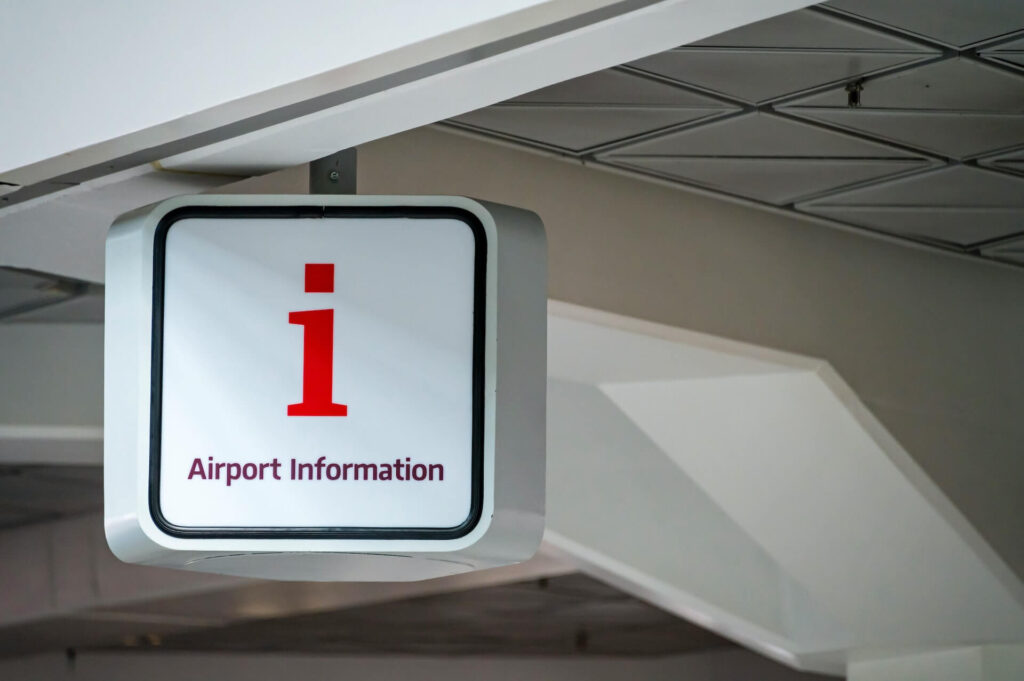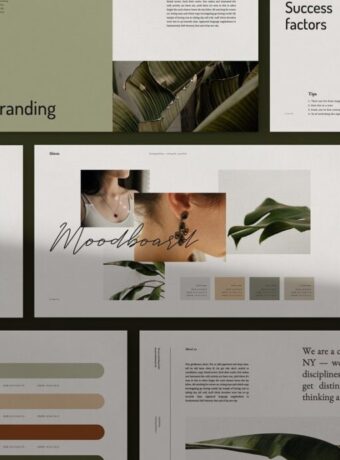Design Communication – The What, Why, and How
Design communication is creating and conveying messages through visual and textual content. It involves understanding audience needs and preferences and crafting content that meets those needs engagingly and effectively. Good design communication can significantly impact how your target audience perceives your brand or message. In this article, we’ll take a closer look at what design communication is, why it’s essential, and how you can use it to your advantage.

What is design communication?
As we mentioned before, design communication is the process of creating and conveying messages through visual and textual content. This can include anything from website design and layout to brochures, flyers, social media posts, etc. Any time you’re trying to communicate a message to an audience through some visual or written medium, you’re engaged in design communication.
Why is design communication important?
In today’s age of constantly evolving technology and short attention spans, it’s more important than ever to communicate your message clearly, concisely, and visually appealingly. If your visuals are cluttered, or your text is difficult to read, you’re likely to lose the attention of your target audience before they even finish consuming your content. On the other hand, if your design is clean and easy on the eyes, with a clear hierarchy of information, you’re much more likely to engage your audience and get your message across effectively.

How can you use design communication to your advantage?
A few key things to remember if you want to use design communication effectively. First off, it’s essential to know your audience inside and out. What are their needs? What are their pain points? What kind of tone should you use to appeal to them? Once you understand who you’re trying to reach, you can start crafting content that will speak directly to them.
It’s also essential to keep your overall message and goals in mind when designing each individual piece of content. Every element of your design should work together to support your larger objectives. Additionally, make sure that the actual act of consuming your content is as easy as possible for your audience. If they have to work too hard to figure out what you’re trying to say, they’re likely to give up before they ever get the complete picture.
Design communication is a process that involves understanding audience needs and preferences, as well as crafting content that meets those needs engagingly and effectively. It’s an essential tool for any business or organization that wants to connect with its target audience in a meaningful way. By keeping these tips in mind, you can use design communication to your advantage and ensure your message gets across loud and clear.
Design communication: the different types and how they work
There are different types of design communication, each with its own strengths and purposes. This blog post will look at the different kinds of design communication and how you can use them to your advantage.
Type 1: Persuasive design communication
One of the most common types of design communication is persuasive design communication. This type of design communication is about convincing the viewer to take a specific action, whether buying a product, signing up for a service, or anything else. Persuasive design communication usually employs solid visuals and clear messaging to convey its point.
Type 2: Informative design communication
Informative design communication is all about providing the viewer with information. This type of design communication is often used in educational settings, such as schools or museums. However, it can also be used in business settings, such as in presentations or informational brochures. The key to informative design communication is ensuring the information is presented in an easy-to-understand way.
Type 3: Instructional design communication
Instructional design communication is similar to informative design communication, except that it focuses on providing instructions on how to do something. This type of design communication is often used in manuals or online tutorials. The key to instructional design communication is ensuring clear and concise instructions.
There are different types of design communication, each with its own strengths and purposes. In this blog post, we’ve looked at three of the most common types of design communication: persuasive, informative, and instructional. By understanding the different types of design communication, you can choose which type best suits your needs.

How to improve your design communication skills
No matter what your role is within a design team, being able to communicate well is essential to success. After all, design is a collaborative process, and being able to share your ideas clearly (and listen to others’ ideas just as carefully) is key to coming up with the best possible solutions. But communication isn’t always easy—especially when dealing with creative differences.
1. Listen more than you speak
This may seem counterintuitive, but it’s important to remember that effective communication is a two-way street. To truly understand what another person is trying to say, you need to be an active listener. That means not only hearing their words but also paying attention to their tone of voice and body language. It can be helpful to practice active listening in your everyday life so that it comes more naturally when you’re in a professional setting.
2. Be clear and concise
Trying to impress others with flowery language or big words can be tempting, but in most cases, simpler is better. When communicating with colleagues (or clients), be clear and concise in your language so there’s no room for misunderstanding. That doesn’t mean you should dumb down your ideas—express them in the simplest way possible.
3. Avoid jargon
Speaking of clarity, it’s also important to avoid using industry jargon when talking with people unfamiliar with it. Not everyone knows all the ins and outs of design as we do, so using acronyms or abbreviations without explanation can leave them feeling lost (and frustrated). When in doubt, err on caution and explain things using layman’s terms.
4. Respect others’ opinions—even if you disagree with them
Creative disagreements are bound to happen occasionally—it’s inevitable when different people work together towards a common goal. But it’s essential not to take these disagreements personally; instead, see them as an opportunity for growth and learning. Remember that everyone is entitled to their own opinion, and try to approach conversations from a place of respect. With that said…
5. Be confident in your ideas and be willing to defend them
While it’s crucial not to respect others’ opinions, it’s also important not to sell yourself short by remaining silent on issues you feel strongly about. If you have an idea you believe in, don’t be afraid to speak up and defend it—after all, that’s what our clients are paying us for! The key is to strike a balance between being confident and open-minded; remember that there’s always room for compromise (see tip number 4).
Good communication skills are essential for any designer—whether you’re working on a freelance basis or as part of an in-house team.
How strong design communication can benefit your career
Good design communication skills are essential for any designer who wants to succeed in their career. Designers must communicate their ideas clearly and concisely to clients, art directors, and other designers. Strong design communication skills can make you a valuable asset to any team and help you get ahead in your career. Here are four benefits of having strong design communication skills.
You will be more valuable to your team
You will be more valuable to your team if you can communicate your ideas clearly and effectively. Design teams rely on clear communication to function correctly. When everyone on the team is on the same page, the whole process runs more smoothly. If you can be the one to help facilitate clear communication, you will be invaluable to your team.
You will win more clients
When you have strong design communication skills, you are more likely to win over clients. Clients want to work with designers that they feel confident in and that they feel like they can trust. If you can communicate your ideas well, you will instill confidence in your clients, and they will be more likely to choose you over another designer.
Compelling presentations result in getting buy-in from clients quicker, resulting in shorter project timelines and typically fewer revisions overall. A designer that can ramp up quickly on a new project while still delivering high-quality work is worth their weight in gold.
You will get promoted quicker
Strong design communication skills can help you get promoted quicker than your counterparts. When you can effectively communicate your ideas, it shows that you are capable of leading a team and that you have the potential to take on more responsibility. If you want to get ahead in your career, start focusing on honing your design communication skills.
Strong design communication skills are essential for any designer who wants a successful career. Good design communication can make you more valuable to your team, help you win over more clients, and even get promoted more quickly. If you want to improve your career prospects, start working on honing your design communication skills today.
What is visual communication branding?
In the business world, first impressions are everything. When customers see a company’s logo or product packaging, they form an immediate opinion about the quality of the product and its reputation. For this reason, businesses need to take care in crafting their visual identity. This is where visual communication branding comes in.
Visual communication branding is designing and communicating a company’s brand identity through visual elements like logos, color schemes, and typography. By carefully selecting these elements, businesses can effectively communicate their brand values and differentiate themselves from their competitors. In today’s increasingly competitive marketplace, visual communication branding is more important than ever.
Examples of effective design communication in the real world
1. The Coca-Cola bottle
The Coca-Cola bottle is one of the world’s most iconic and recognizable designs. The bottle’s contoured shape is instantly recognizable, and it has been credited with helping to make Coca-Cola one of the most popular beverages in the world. The Coca-Cola bottle’s design has remained unchanged since it was first introduced in 1915, which is a testament to its timelessness.
2. The Nike swoosh
Another example of effective design communication is the Nike swoosh. The simple yet powerful design has helped to make Nike one of the most recognizable brands in the world. The swoosh is often used on its own, without any other words or graphics, and it still communicates a strong message about the quality and performance of Nike products.
3. The Apple logo
The Apple logo is also an excellent example of effective design communication. The logo, which features a bitten apple, is simple yet memorable, and it has helped to make Apple one of the most successful companies in the world. The logo is so effective that it is often used on its own, without any other words or graphics.
4. The Mercedes-Benz logo
The Mercedes-Benz logo, which features a three-pointed star, has helped make Mercedes-Benz one of the world’s most recognizable luxury car brands. The logo is often used on its own, without any other words or graphics, and it still communicates a strong message about the quality and performance of Mercedes-Benz products.
5. The McDonald’s arches
McDonald’s arches are immediately recognizable and have helped to make McDonald’s one of the world’s most popular fast food restaurants. The arches are often used on their own, without any other words or graphics, and they still communicate a strong message about the convenience and affordability of McDonald’s products.

Read more about design and branding
How To Choose A Brand Pattern For Your Branding
How To Choose Brand Illustration Style For Your Business
Brand Anatomy – What Is It, And What Are Its Key Elements?
Branding ebook: The Ultimate Guide To Branding
More about the author Victoria Silber
Last Updated on 14/04/2023 by Victoria Silber






